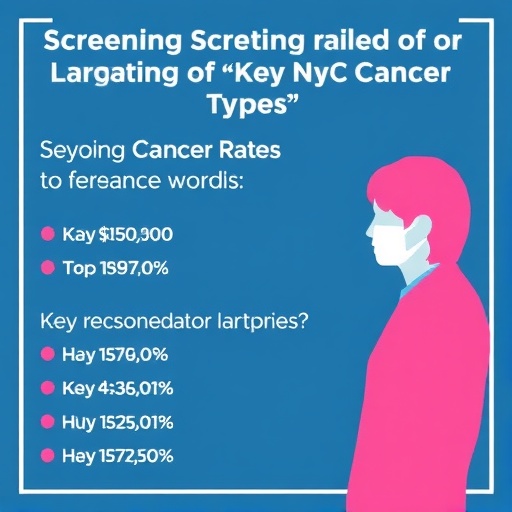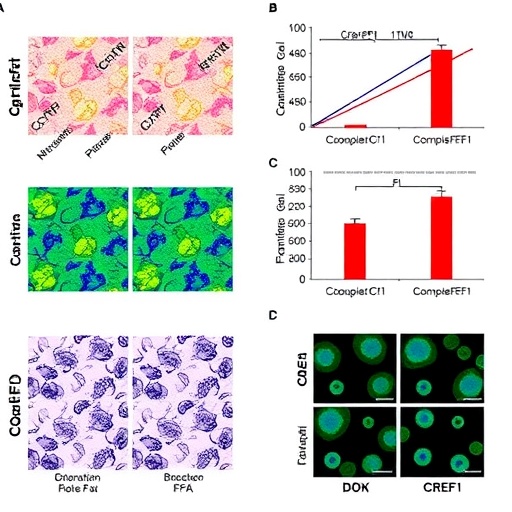In an ambitious exploration of cancer screening disparities, recent research conducted in New York City sheds illuminating light on the varied prevalence of breast, cervical, and colorectal cancer screenings across diverse ethnic communities. This study, published in the reputable journal BMC Cancer, highlights critical gaps in preventive healthcare that disproportionately affect certain minority groups, emphasizing the urgent need for culturally informed public health interventions.
The investigation utilized comprehensive data from two significant sources: the 2021–2022 Community Health Resources and Needs Assessment (Cancer CHRNA) and the 2017–2020 New York City Community Health Survey (CHS). Together, these datasets enabled a nuanced evaluation of cancer screening rates among seven distinct ethnic groups: Eastern European, Afro-Caribbean, Latine, Chinese, Korean, South Asian, and Southwest Asian and North African (SWANA) populations. By disaggregating these groups, the researchers circumvented the common pitfall of lumping diverse minorities together, thus providing a granular view of screening behaviors.
One of the pivotal findings pertained to mammography screening rates, which serve as a frontline defense against breast cancer through early detection. The Cancer CHRNA data revealed that with the exception of the Afro-Caribbean population, all groups exhibited mammogram screening rates below 70%, a threshold often regarded as a minimum benchmark for adequate coverage. Similarly, the CHS findings indicated suboptimal mammogram screening uptake particularly among South Asian, Chinese, and Eastern European groups, underscoring a widespread shortfall in breast cancer preventive care.
Advanced statistical analysis via multivariable logistic regression further clarified these disparities. In the Cancer CHRNA dataset, South Asian and SWANA groups were significantly less likely to have up-to-date mammograms relative to the Afro-Caribbean reference group. Interestingly, these differences did not manifest in the CHS cohort, perhaps highlighting the influence of differing survey methodologies or temporal changes in healthcare access and utilization. Such variations point to the dynamic and complex landscape of screening behaviors across time and study design.
Cervical cancer screening, assessed through Pap test prevalence, presented a different pattern yet remained a cause for concern. Apart from the Latina group in the Cancer CHRNA dataset, all other ethnicities fell short of the 70% screening threshold. The CHS corroborated these findings for South Asian and Chinese populations. Logistic regression analyses revealed that Latina women consistently had higher likelihoods of maintaining up-to-date Pap tests compared to their counterparts, indicating potential cultural or systemic facilitators of cervical cancer screening in this community.
Colorectal cancer screenings, measured by up-to-date colonoscopy rates, were alarmingly low across the board, dropping beneath 70% in all groups within Cancer CHRNA and notably so among SWANA, South Asian, Chinese, and Eastern European participants in the CHS. The Cancer CHRNA data further indicated that with the exception of the Chinese group, all other groups demonstrated decreased odds of receiving timely colonoscopies compared to Eastern Europeans. The CHS accentuated this disparity by showing reduced screening likelihood among Chinese and SWANA groups compared to Afro-Caribbean individuals. These findings underscore colorectal cancer screening as an area of pronounced inequity requiring targeted outreach.
The observed screening deficits hold grave implications for cancer morbidity and mortality within these populations. Early detection through routine mammograms, Pap tests, and colonoscopies is unequivocally linked to improved survival outcomes, yet systemic barriers persist. Factors such as language obstacles, cultural beliefs, healthcare accessibility, insurance coverage, and socioeconomic status intricately interplay to shape screening uptake. Recognizing and addressing these multilayered determinants is paramount in bridging the screening gap.
Within the context of public health policy, the disaggregation of minority ethnic groups as employed by this study offers a template for refining surveillance and intervention strategies. Aggregated data risk masking vulnerable subgroups, thereby diluting the precision of resource allocation. By identifying specific communities with the lowest screening adherence, health authorities can tailor culturally competent messaging, navigation services, and community partnerships to elevate cancer prevention awareness.
Moreover, the study’s divergent findings between the Cancer CHRNA and CHS surveys highlight methodological considerations critical to epidemiologic research. Differences in survey timing, participant recruitment, question framing, and data collection modes can influence reported prevalence, necessitating cautious interpretation. This variability suggests that continuous, standardized surveillance is essential to monitor trends and measure the impact of interventions over time.
The study authors advocate for system-level reforms aimed at eradicating screening disparities. Such measures may include expanding access to linguistically and culturally appropriate healthcare services, integrating community health workers into screening outreach, and fostering provider training to mitigate implicit biases. Digital health tools and mobile screening units represent innovative avenues to remove logistical obstacles, especially in underserved neighborhoods densely populated with minority populations.
In addition to addressing current barriers, there remains a critical need to amplify education surrounding cancer screenings within these communities. Misinformation, stigma, and fatalistic attitudes can deter individuals from seeking preventive services. Collaborations with trusted community leaders and culturally resonant media campaigns are effective strategies to demystify cancer screenings and empower proactive health behaviors.
Overall, this in-depth examination of breast, cervical, and colorectal cancer screening disparities in New York City casts a revealing spotlight on a public health urgency. By transcending simplistic racial categorizations and embracing the rich diversity of minority populations, the study provides actionable insights to guide equitable health promotion efforts. The findings demand concerted action to ensure that life-saving cancer screenings are accessible, acceptable, and embraced by all.
As cancer remains a leading cause of death, harnessing data-driven approaches to understand and dismantle preventive care inequities constitutes a moral and medical imperative. This research exemplifies how precision public health can transform epidemiologic inquiry into targeted, impactful interventions that save lives and foster health equity — a vision essential to the future of oncology and community wellness.
Scientific and medical communities, along with policymakers, must heed these findings and invest in culturally tailored cancer screening programs. Only through sustained commitment to data-informed inclusivity can disparities be mitigated and the benefits of early cancer detection realized for every resident of New York City and beyond.
Subject of Research: Prevalence and disparities of breast, cervical, and colorectal cancer screenings among ethnically diverse populations in New York City.
Article Title: Prevalence of breast, cervical, and colorectal cancer screenings among select New York City populations
Article References: Wyatt, L.C., Nguyễn, C.H., LeCroy, M.N. et al. Prevalence of breast, cervical, and colorectal cancer screenings among select New York City populations. BMC Cancer 25, 1469 (2025). https://doi.org/10.1186/s12885-025-14763-z
Image Credits: Scienmag.com
DOI: https://doi.org/10.1186/s12885-025-14763-z





